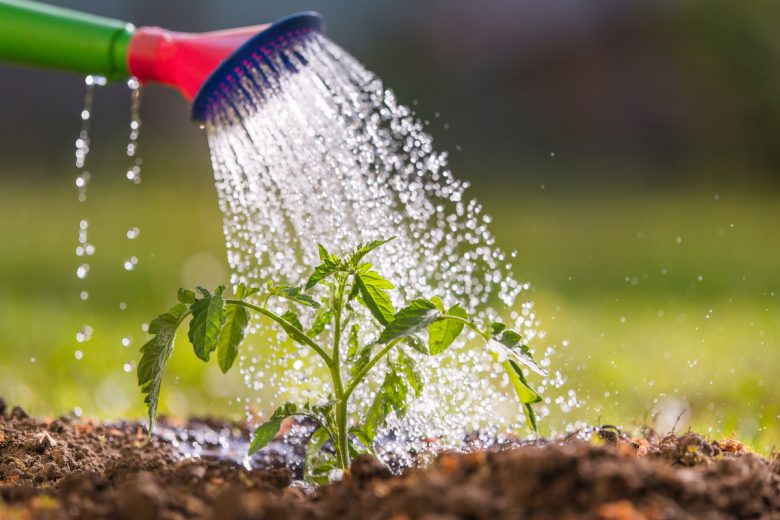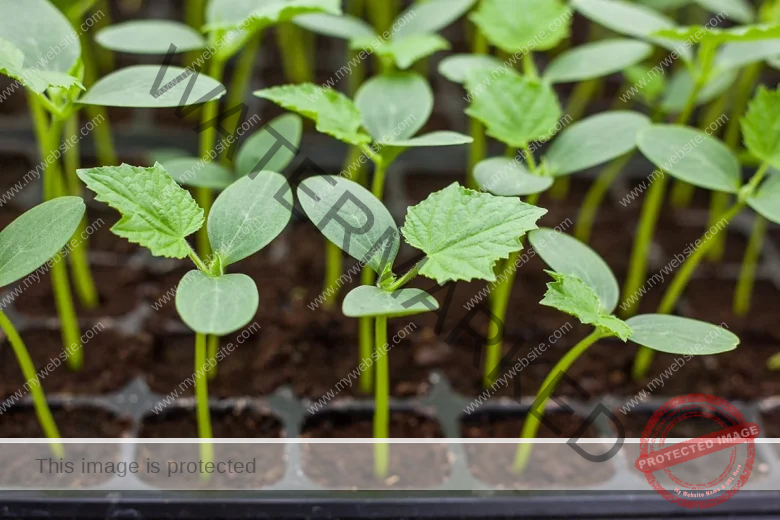Cucumber plants are a popular choice among home gardeners and commercial farmers alike due to their fast growth, high yield, and refreshing taste. However, like any other crop, cucumbers require proper care and attention to thrive. One common issue that many cucumber growers face is overwatering. Overwatering can lead to a range of problems, including root rot, nutrient deficiencies, and stunted growth, ultimately affecting the health and productivity of the plants.
Understanding the signs of overwatering and how to address them is crucial for maintaining healthy cucumber plants. When cucumber plants receive too much water, their roots can become waterlogged and oxygen-deprived, leading to poor nutrient uptake and a weakened immune system. This can make the plants more susceptible to diseases and pests, further compromising their growth and yield.
In this comprehensive guide, we will explore the causes and symptoms of overwatered cucumber plants, effective solutions to rectify the issue, and preventive measures to ensure your cucumber plants remain healthy and productive. By the end of this article, you will have a thorough understanding of how to manage water levels for your cucumber plants, helping you achieve a bountiful harvest.
Causes and Symptoms of Overwatering
Causes of Overwatering
Overwatering cucumber plants can result from several factors, including:
- Frequent Watering: Watering the plants too often without allowing the soil to dry out between watering sessions can lead to overwatering. Cucumbers need a balance of moisture and dry periods to thrive.
- Poor Drainage: Soil that does not drain well or containers without adequate drainage holes can cause water to accumulate around the roots, leading to waterlogged conditions.
- Heavy Rainfall: Extended periods of heavy rainfall can saturate the soil, overwhelming the plant’s ability to absorb and utilize water properly.
- Clay Soil: Soils with a high clay content tend to retain water for longer periods, increasing the risk of overwatering.
Symptoms of Overwatered Cucumber Plants
Identifying the symptoms of overwatering is crucial for timely intervention. Look out for the following signs:
- Yellowing Leaves: Overwatered cucumber plants often exhibit yellowing leaves, starting from the bottom of the plant and progressing upwards. This is a sign of nutrient deficiency caused by impaired root function.
- Wilting: Despite the abundance of water, overwatered plants can appear wilted due to the roots’ inability to take up water effectively. This wilting can occur even when the soil is wet.
- Root Rot: Prolonged exposure to waterlogged conditions can lead to root rot, a condition where the roots become dark, mushy, and foul-smelling. Root rot severely hampers the plant’s ability to absorb water and nutrients.
- Stunted Growth: Overwatered cucumber plants may show signs of stunted growth, with smaller leaves, fewer flowers, and reduced fruit production.
By recognizing these symptoms early, you can take corrective measures to prevent further damage and restore your cucumber plants to good health.
Solutions to Overwatered Cucumber Plants
1. Improve Drainage
One of the most effective ways to address overwatering is to improve soil drainage. Here are some methods to enhance drainage:
- Raised Beds: Growing cucumbers in raised beds can help improve drainage, especially in areas with heavy clay soil. Raised beds allow excess water to drain away more easily, reducing the risk of waterlogging.
- Amend Soil: Incorporate organic matter such as compost, peat moss, or aged manure into the soil to improve its structure and drainage capacity. These amendments help create a more porous soil that drains excess water effectively.
- Add Sand: Mixing sand into the soil can also improve drainage by increasing soil permeability. However, be cautious with the amount of sand added, as too much can lead to poor nutrient retention.
2. Adjust Watering Practices
Modifying your watering practices can significantly reduce the risk of overwatering:
- Water Deeply and Infrequently: Instead of frequent shallow watering, water your cucumber plants deeply but less often. This encourages the roots to grow deeper into the soil, where they can access moisture more efficiently.
- Check Soil Moisture: Before watering, check the soil moisture by inserting your finger into the soil up to the second knuckle. If the soil feels dry at this depth, it’s time to water. If it’s still moist, wait a day or two before checking again.
- Mulching: Applying a layer of mulch around your cucumber plants can help retain soil moisture and reduce the frequency of watering. Mulch also helps regulate soil temperature and suppress weeds.
3. Aerate the Soil
Soil aeration is essential for promoting healthy root growth and preventing waterlogging:
- Manual Aeration: Use a garden fork or aeration tool to create small holes in the soil around your cucumber plants. This helps improve air circulation and allows excess water to drain away.
- Soil Amendments: Incorporating perlite or vermiculite into the soil can enhance aeration and drainage. These materials create air pockets within the soil, preventing compaction and promoting healthy root development.
4. Prune Affected Plants
Pruning can help reduce the stress on overwatered cucumber plants and encourage new growth:
- Remove Damaged Leaves: Trim away yellowing, wilted, or diseased leaves to reduce the plant’s overall stress and prevent the spread of disease.
- Prune for Airflow: Prune the plants to improve airflow around the foliage, which can help reduce humidity and prevent fungal infections.
5. Use Raised Beds or Containers
Growing cucumbers in raised beds or containers can provide better control over watering and drainage:
- Raised Beds: Raised beds allow for better drainage and prevent water from pooling around the roots. They also make it easier to amend the soil and improve its structure.
- Containers: Using containers with drainage holes ensures that excess water can escape, reducing the risk of overwatering. Choose containers that are appropriately sized for cucumber plants to allow adequate root growth.
6. Monitor Weather Conditions
Pay attention to weather conditions and adjust your watering schedule accordingly:
- Rainfall: During periods of heavy rainfall, avoid watering your cucumber plants until the soil has had a chance to dry out. If possible, use a rain gauge to measure the amount of rainfall and determine if additional watering is necessary.
- Temperature: High temperatures can increase evaporation rates and soil moisture loss. During hot weather, monitor soil moisture more frequently and adjust watering as needed.
7. Provide Proper Nutrition
Overwatered plants may struggle to absorb nutrients effectively, leading to deficiencies:
- Fertilize Appropriately: Use a balanced fertilizer to provide essential nutrients to your cucumber plants. Be cautious not to over-fertilize, as this can exacerbate stress on the plants.
- Foliar Feeding: If root absorption is compromised, consider foliar feeding by applying a diluted fertilizer solution directly to the leaves. This can provide a quick nutrient boost to help the plants recover.
By implementing these solutions, you can effectively address the issue of overwatered cucumber plants and promote their health and productivity.
Preventive Measures
1. Soil Preparation
Proper soil preparation is key to preventing overwatering:
- Choose Well-Draining Soil: Select a well-draining soil mix for your cucumber plants. Sandy loam soils with organic matter are ideal for cucumbers, as they provide good drainage and nutrient retention.
- Test Soil pH: Cucumber plants prefer slightly acidic to neutral soil (pH 6.0-7.0). Conduct a soil test to determine the pH and amend it if necessary to create optimal growing conditions.
2. Watering Schedule
Establishing a consistent watering schedule can help prevent overwatering:
- Morning Watering: Water your cucumber plants in the morning to allow excess moisture to evaporate throughout the day. This reduces the risk of fungal diseases and ensures the plants have access to water when they need it most.
- Avoid Overhead Watering: Use drip irrigation or soaker hoses to deliver water directly to the soil, minimizing water contact with the foliage. This helps reduce the risk of fungal infections and waterlogging.
3. Mulching
Mulching is an effective way to regulate soil moisture and temperature:
- Organic Mulch: Apply a layer of organic mulch, such as straw, wood chips, or compost, around your cucumber plants. Mulch helps retain soil moisture, suppress weeds, and regulate soil temperature.
- Replenish Mulch: Regularly check the mulch layer and replenish it as needed to maintain its effectiveness.
4. Raised Beds and Containers
Growing cucumbers in raised beds or containers provides better control over watering and drainage:
- Raised Beds: Raised beds improve drainage and prevent water from pooling around the roots. They also make it easier to amend the soil and create optimal growing conditions.
- Containers: Choose containers with adequate drainage holes to allow excess water to escape. Use a high-quality potting mix designed for container gardening to ensure proper drainage and nutrient availability.
5. Regular Monitoring
Regular monitoring of soil moisture and plant health is essential for preventing overwatering:
- Soil Moisture Check: Check the soil moisture regularly using a moisture meter or by inserting your finger into the soil. Water only when the soil feels dry at the root level.
- Observe Plant Health: Keep an eye on your cucumber plants for signs of overwatering, such as yellowing leaves, wilting, or root rot. Early detection allows for timely intervention and prevents further damage.
By following these preventive measures, you can maintain optimal soil moisture levels and ensure the health and productivity of your cucumber plants.
Conclusion
Overwatering is a common issue that can significantly impact the health and yield of cucumber plants. However, with the right knowledge and practices, it is possible to address and prevent overwatering effectively. By understanding the causes and symptoms of overwatering, implementing solutions to improve drainage and adjust watering practices, and adopting preventive measures, you can create an ideal growing environment for your cucumber plants.
Proper soil preparation, consistent watering schedules, mulching, and the use of raised beds or containers are essential strategies for preventing overwatering. Regular monitoring of soil moisture and plant health allows for early detection and intervention, ensuring your cucumber plants thrive and produce a bountiful harvest.
Remember, successful cucumber cultivation requires a balance of moisture, nutrients, and care. By following the guidelines outlined in this article, you can overcome the challenges of overwatering and enjoy healthy, productive cucumber plants. Happy gardening!

